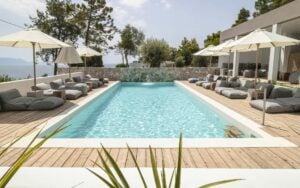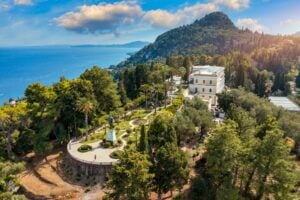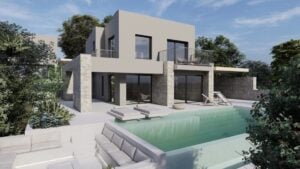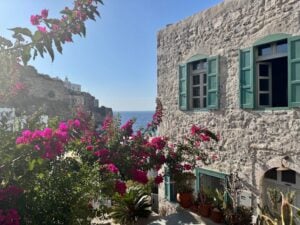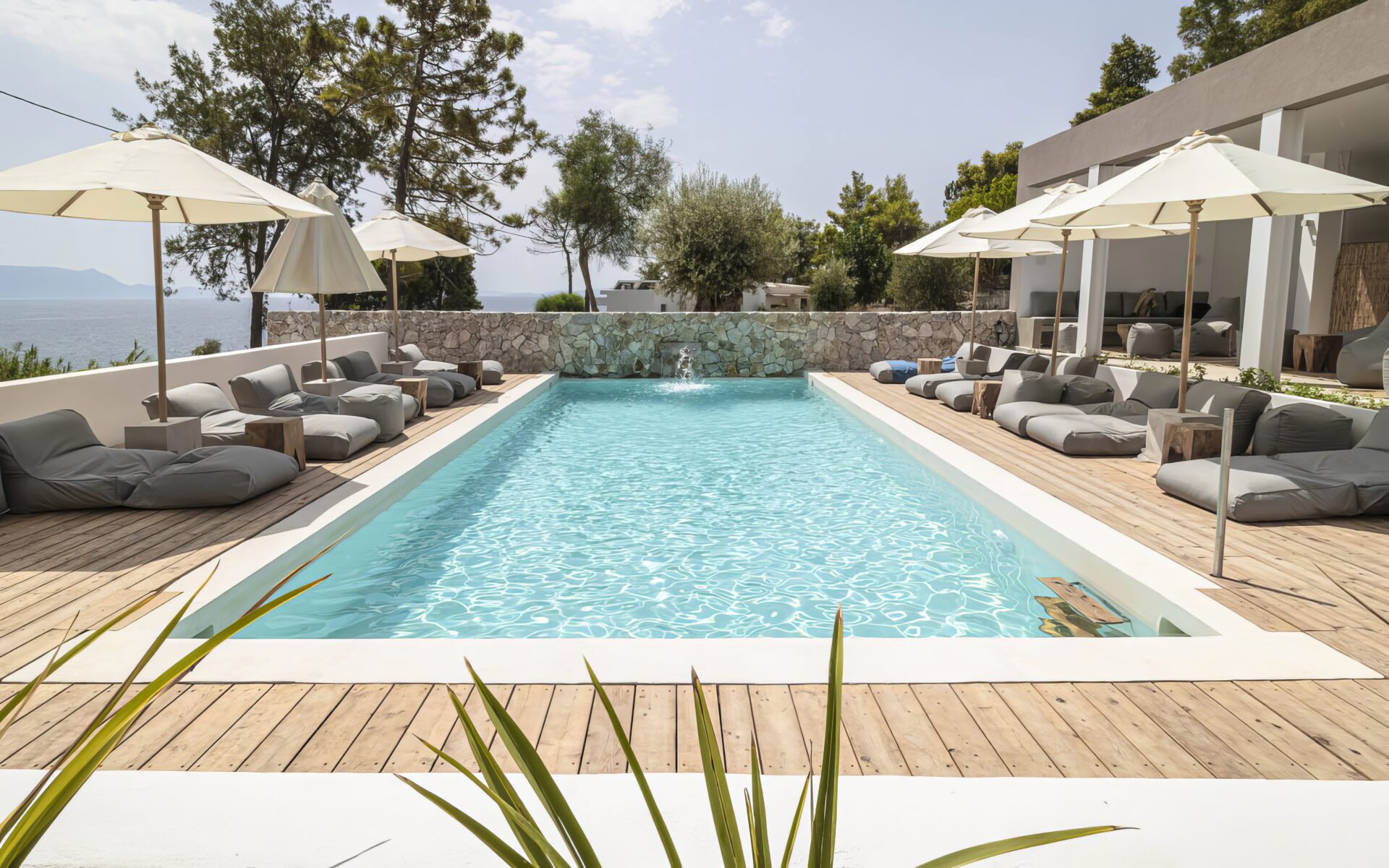Google “Greek islands” and the first pictures in the search results will likely be on Mykonos or Santorini. We’re all familiar with the white stucco walls and blue trim that characterize the architecture of these 2 world-famous islands. The two-tone style is popular more broadly in the Cyclades, a group of islands just east of Athens.
The churches follow the same color rules, with domes painted either white or vibrant blue, depending on the island. In the Cyclades, an area known for its colorful beaches, remarkable sunset, and warm hospitality, why did this style become so popular? Why is it not found on the mainland?

Is it Just for Aesthetics?
There is a good reason why Instagrammers flock to the Cyclades for their blue and white hues. The soft tones reflect the peace of the area and complement the calming tones of the sea. However, there is a deeper reason for the color scheme.
Does it have to do with the Flag?
Although they resemble the Greek flag, the initial design was not based on this connection.
Ancient Roots
Even back in Minoan times, during the Bronze Age, bright colors were preferred to dull ones. Typically, cubic designs were used for family homes, sometimes with one unit stacked on top of another. Building materials were what was available (primarily stone), as well as a small amount of mud to ensure stability. Surprisingly, even though the walls were made without mortar, they have been around for centuries.
Fast Forward to the 19th Century
The decision to “paint” houses white was, most of all, practical. Families survived off the land, so it only made sense to build with materials available from the natural landscape. Originally, houses on the islands were built with dark stones. If you take a stroll through the main villages in Mykonos, you’re sure to catch a glimpse of some homes still built with this style.
Stone was the logical building material, being ubiquitous and free. However, being dark, the stones absorbed the light and the interior heated to unbearable temperatures. To cool down their spaces, they painted over the rocks with whitewash – a mixture of lime, salt, and water — which was much cheaper than paint.
Where did the Blue Come From?
Again, frugality reigns. The blue color hearkens from a cleaning agent known as Loulaki (blue powder). It is like talcum powder, and was found in virtually every family home. The name brand also refers to the color pigment “loulaki,” which is akin to indigo. Mixing it with lime creates the bright blue color that we know today on white houses in Greece. This blue was also inexpensive.
War Times
During the colonel’s dictatorship from 1967 to 1974, the junta established by Colonel Georgios Papadopoulos and Brigadier General Stylianos Pattakos mandated blue and white as standard colors for Cycladic homes. This was an attempt to boost patriotism and reflected Greek national pride. A law was later passed in 1974 which reverted the mandate. However, although the regulations were relaxed, locals realized that the colors were a draw to tourists. Naturally, it made sense to keep the two-tone style because it stimulated the local economy.
A Potent Disinfectant
In the late 1930s, Greece was suffering from a cholera epidemic, and the nation’s leader at the time, Ioannis Metaxas, ordered all Greek citizens to whitewash their houses. The whitewash used to paint the outside of citizens’ homes contained limestone, which happens to be a potent disinfectant. “Painting” homes with this color helped keep families safe and prevented the outbreak from spreading further.

Are there Variations on Other Cycladic Islands?
Desides the white houses in Greece, each island in the Cyclades has its own substyle that in many cases is unique only to that area. The pigeon houses in Tinos, the distinct towers of Naxos, the Venetian two-story abodes in Mykonos, and the tiled roof patterns in Kythnos are just a few examples.




